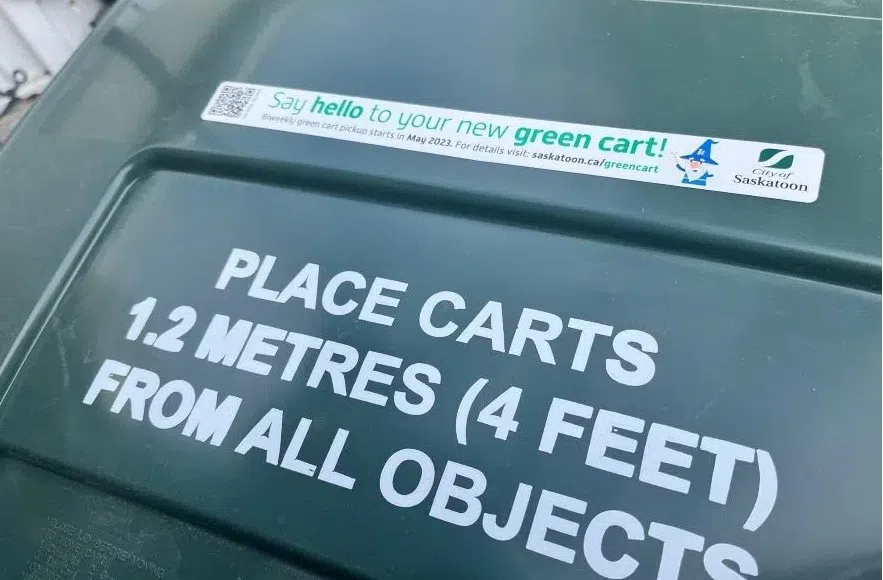Green is the colour in the Bridge City.
On Wednesday, Saskatoon City Council approved the implementation of a city-wide organics collection program for multi-unit residential properties like apartments, condos and townhouses. It aims to ensure all residents have equal access to waste services.
This approval builds on what the city calls a successful curbside green cart program for single-family homes.
Read more:
- Saskatoon to build organics facility, change College and Wiggins intersection
- Council to consider borrowing $22 million for organics processing facility
- ‘Absolutely shocked:’ Saskatoon woman’s dog sick from compost
The recommendation for the multi-unit organics program comes from a yearlong pilot study on how to provide the best organics diversion to multi-unit rental properties.
Residents, property managers and condo boards all showed a preference for a city-leg organics program. According to the city, this project will be the most cost-efficient when compared to current market alternatives.
Organic materials collected through the program will be handled by the city’s organic processing facility, which was approved in April 2024.
Construction for the facility begins in July.
The program is aiming to be fully operational by 2028.
Facility approved in 2024
Back in 2024, council voted 6-5 in favour of going ahead with a motion to build a 40,000-tonne capacity facility that could accommodate the city’s current needs and estimated future capacity when it comes to processing organics.
The city wants to move on from its contract with Loraas, which it says will help reduce costs.
The anticipated cost to build the facility is $22.1 million, and it would be located south of the current landfill. The land where the facility would be built is already owned by the city.
Administration suggested that approving the project will bring long-term price stability to utilities, as utility processing costs will be city-controlled as opposed to if they continued to run operations through a third-party processor.
Administration also estimated the curbside organics program would be charged $2.5 million for organics processing in 2026.
The costs would be funded through utility fees charged to residents. Based on the suggested tonnes and inflationary increases, assuming there is a 1.5 to two per cent increase in costs, the five-year processing cost paid to the city compost depot would be approximately $12.7 million.
Why does the city want an organics program?
According to the City of Saskatoon, more than half of the waste thrown in the garbage can be diverted.
Food and yard waste that goes into the landfill does not become soil. Landfills bury the waste without oxygen, so when it breaks down, it turns into leachate, also known as garbage juice, and methane.
Leachate pollutes land and water, and methane is a powerful greenhouse gas that can escape into the atmosphere. These chemicals are expensive for the city to manage.
By diverting organic waste away from the landfill, the city said it can delay or even avoid the expenses of building a second landfill, reduce greenhouse gas emissions and reduce environmental pollution.
What items are organic waste?
Items considered organic waste are:
- plant trimmings and flowers
- fruits and vegetables
- bread, noodles and other grains
- coffee grounds, paper filters and paper teabags
- eggs and eggshells
- food soiled paper products
- meat and seafood
- dairy products (yogurt, butter and cheese)
- solidified fats and food grease
- baked goods
- BPI-cerficied compostable bags
Unacceptable items are:
- elm wood
- pet waste and bags
- styrofoam
- diapers and hygiene products
- plastic bags and packaging
- glass and metal packaging
— with files from 650 CKOM’s Shane Clausing











